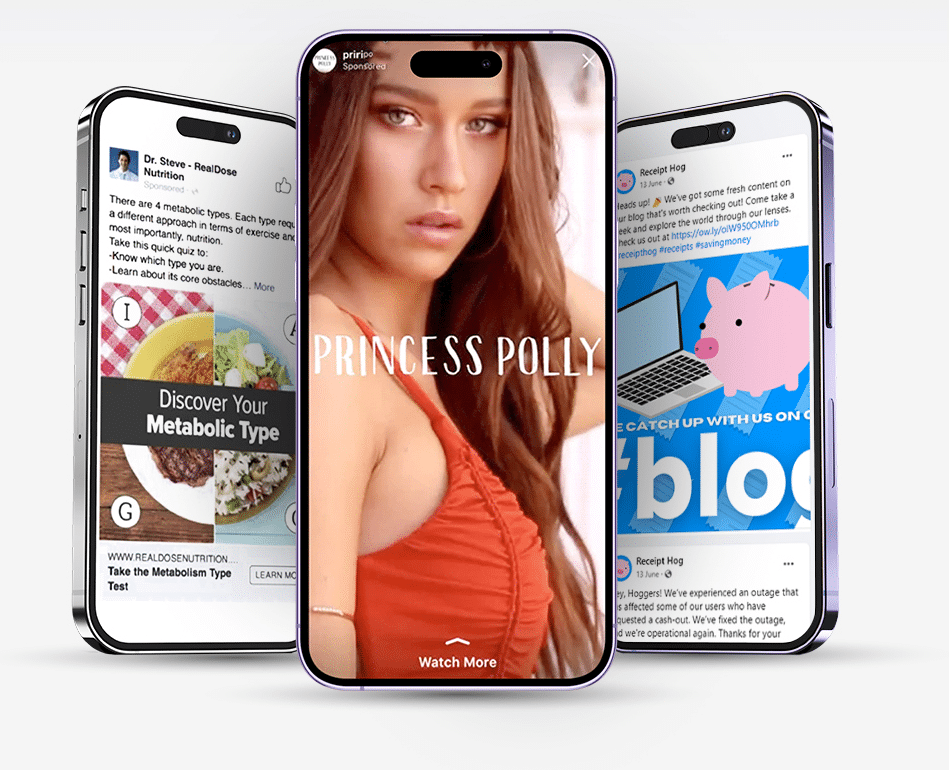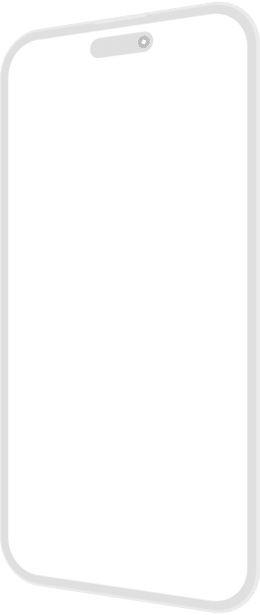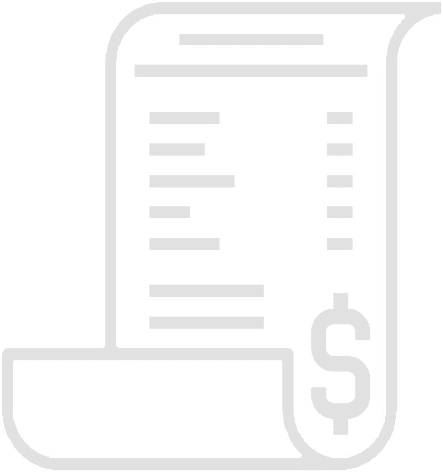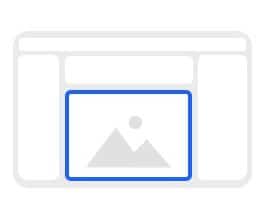Grow your business with LinkedIn Advertising
Increase your revenue and scale your business with AdvertiseMint, the trusted LinkedIn advertising agency!

Grow your business with Facebook, Instagram & TikTok advertising. Let's talk 844-236-4686.
Increase your revenue and scale your business with AdvertiseMint, the trusted LinkedIn advertising agency!


When it comes to running LinkedIn ads, our LinkedIn marketing experts know how to make your business profitable. Increase your revenue and scale your business with AdvertiseMint, the trusted LinkedIn advertising agency!
Updated: July 12, 2025
Can you guarantee my LinkedIn ads will be profitable?
The answer is simple
The only guarantee is that LinkedIn will show your ads and take your money.
The rest is all a game. Constantly moving. Constantly adapting.
New Algorithms. New Competitors. New Challenges.
Its like a casino, and the house was built to win.
So how can your business grow?
Come closer! We’ll tell you how!
You need a guide. An expert. A team of experts.
Experts who navigate the LinkedIn ads jungle all day, every day.
Experts that constantly produce results.
They combine knowledge and data with creativity.
They know what works. They know how to scale.
They will outwork anyone to get results.
And guess what…

LinkedIn advertising is a powerful marketing strategy that enables businesses to reach and engage with a professional audience on the popular social networking platform. With its extensive user base of industry professionals, LinkedIn provides a unique opportunity to target specific job titles, industries, and company sizes.
Moreover, the platform offers various ad formats, including sponsored content, text ads, sponsored InMail, and video ads, allowing businesses to deliver their message engagingly. By utilizing LinkedIn’s precise targeting options, businesses can tailor their ads to resonate with their target audience, driving higher engagement and conversions.
With its emphasis on professional networking and thought leadership, LinkedIn advertising serves as a valuable tool for businesses aiming to establish brand credibility, generate leads, and expand their professional network.


LinkedIn ads for a business depend on several factors. Firstly, consider your target audience and whether they align with LinkedIn’s professional user base. LinkedIn ads can be highly effective if your business caters to professionals, B2B clients, or industry-specific niches.
In addition, if you aim to build thought leadership, establish credibility, or engage in professional networking, LinkedIn’s platform offers unique opportunities. However, it’s vital to assess your budget and advertising goals. LinkedIn ads generally have higher costs than other platforms, so ensure it aligns with your marketing budget.
Furthermore, evaluate the competition within your industry on LinkedIn and assess the potential ROI based on your business objectives. By analyzing these factors, you can make an informed decision on whether LinkedIn ads are the right fit for your business.
The cost of LinkedIn advertising can vary based on several factors. These factors include your chosen ad format, bidding strategy, target audience competitiveness, and ad quality. While LinkedIn offers a variety of ad formats, such as sponsored content, text ads, sponsored InMail, and video ads, each comes with its own pricing structure.
Furthermore, the bidding strategy you employ, whether it’s cost per click (CPC) or cost per impression (CPM), can impact the overall cost. The competitiveness of your target audience and industry can also affect prices, as higher competition can drive up costs. Ad relevance, quality, and engagement rates also play a role in determining the cost of your LinkedIn campaigns.
To determine the precise cost for your business, it’s advisable to set a budget, carefully track campaign performance, and optimize your ads based on data-driven insights.

LinkedIn has over 930 million members across the globe.
LinkedIn’s user base has 60% millennials.
LinkedIn has a staggering 58 million registered companies on its platform.
LinkedIn has 39 thousand skills are available for users to showcase on their profiles.
Find new customers and deepen relationships with people who will click through and buy.
Generate excitement and maintain momentum around a new product or service.
With guaranteed reach and frequency, you’ll ensure your potential customers are seeing your brand messaging on a consistent basis.
Find your ideal prospects and present them with compelling offers or info about your business in exchange for their contact information.
Make sure your videos or commercials are seen by your target audience.
You can target audiences within a wide range of consumer attributes like demographics, interests, behaviors and custom audiences.
Get your app into the hands of the right people and keep them engaged with your app.
Reach customers on their mobile phone who are located near your location to increase foot traffic and sales from your business.
Reach an extremely targeted audience of business decision makers or individuals in specific roles or companies.
Promote your business by going LIVE to your community and feature your business products or services.
Communicate directly with your customers through messages and comments on the platform. Perfect for sales, lead generation or customer service.
Promote your business posts to ensure your content is reaching your community and followers so they can engage.
“Before I found AdvertiseMint, I had looked into several other companies that, on paper, appeared to be bigger and more established. However, during the vetting process, I was impressed with their communication and speed at which the projects were completed. It was for this reason that I chose to go with AdvertiseMint, and they continue to impress me with their knowledge, speed and communication.”
– Alex, California
To find highly targeted customers and connections on LinkedIn, utilize advanced search filters to narrow down your search based on criteria such as job titles, industries, and locations. Join relevant industry groups to engage with like-minded professionals and build connections.
Consider leveraging LinkedIn Sales Navigator for advanced search capabilities and lead recommendations. Personalize your outreach to demonstrate genuine interest and increase the likelihood of connecting with highly targeted individuals who can become valuable customers and connections.
When employees maintain an active presence on the platform, they become brand ambassadors, effectively promoting your company’s mission, values, and expertise. By listing your company as their workplace and engaging with company content, employees create valuable inbound links to your LinkedIn page, increase your company’s visibility, and attract potential customers.
Moreover, when employees share their industry insights and thought leadership, connections who want to learn more about them may visit their profile, discover their affiliation with your company, and subsequently follow your company page.
Joining groups on LinkedIn and staying active within them is a strategic approach to expanding your network, gaining industry insights, and establishing thought leadership. By joining relevant groups in your industry or niche, you can connect with like-minded professionals, engage in discussions, and share valuable insights.
Staying active within these groups allows you to showcase your expertise, build relationships with potential clients or partners, and increase your visibility within your target audience.
Advanced Knowledge – From day one, you are accessing the collective knowledge of the agency experts and all the campaigns they have run in the past. This means avoiding costly mistakes someone less experienced may repeat.
Dedicated Support – As an agency, we have direct access to the LinkedIn team to solve critical performance issues quickly, optimize existing ad performance, and access new features and tools to help you increase results ahead of your competition.
Reduced Cost – Utilizing the agency model allows your business access to multiple experts at a fraction of the cost for full-time individuals to complete the same work.
Strategic Approach: LinkedIn agencies can develop a comprehensive marketing strategy tailored to your business objectives and target audience, ensuring your ads align with your overall marketing goals.
Access to Tools and Insights: Agencies have access to advanced analytics tools and industry insights, enabling them to understand your campaign performance better and make data-backed recommendations.
Keeping Up with Trends: LinkedIn agencies stay updated on the latest trends, algorithm changes, and best practices in LinkedIn advertising, ensuring your campaigns remain effective and competitive.
Improve your LinkedIn ads with comprehensive growth strategies and expert management. Our team provides a custom combination of LinkedIn services specifically tailored for your needs.
Services
Our mission is to create the world’s most profitable ads. The AdvertiseMint accomplishes this with experts who specialize in LinkedIn advertising ensuring your ads will be shown to the right audience, at the right time for the right price. Our job is to ensure this happens consistently and that the performance of your LinkedIn ads are meeting your expectations. Our team uses a combination of elite individuals in media buying and creative, along with the latest technology in artificial intelligence and machine learning to ensure your ads are generating the results that matter for your business.
Hi there. Thanks for visiting AdvertiseMint.
Are you ready to grow your business with LinkedIn ads? The team at AdvertiseMint helps successful companies like yours grow through LinkedIn advertising.
There are three main reasons why companies hire agencies.
The first is because there is simply too much work on their plate and they need help growing their business. Agencies provide an expert team at a fraction of the cost of hiring full time employees. Our creative team and elite media buyers are standing by, ready to help you increase sales, generate high-quality leads, increase app installs and grow your brand.
The second is because they want to work with a team that is highly specialized in a specific type of advertising. Most business owners and executives want to work with people who are smarter than them, thus ensuring the best results for their business.
The third is performance. When business owners and marketing executives realize there is a disconnect between ad spend and results generated with their current team, it becomes a problem that needs to be addressed and resolved immediately. The opportunity cost of not making a change to an expert team can be devastating to the bottom line.
The world of advertising is changing faster than ever now, with new advertising platforms and opportunities becoming available all the time.
AdvertiseMint uses the ETP Method to provide superior results for our clients vs our competitors.
The ETP Method combines the three things that are essential with all advertising.
ELITE: We have created a team that brings their elite skills to their industry. We’re talking elite media buyers, elite copywriters, elite video creators, editors and elite talent. Elite means an individual is dedicated to the process of becoming the best, which means they are knowledgeable but always learning, certified and have a track record of winning. Advertising is a team sport and we want you to have an All-Star team.
TECHNOLOGY: We embrace the new technology that is constantly improving advertising. This means selecting the best LinkedIns, utilizing advanced features and latest tools in artificial intelligence and machine learning to create better ads, faster and more efficient than ever before.
PERFORMANCE: Results are all the matter in Advertising and the end result of elite individuals using the latest in technology. The end result of everything we do. If the right people are using the right tools and analyzing the right data, the performance will speak for itself.
If you are committed towards growing your business and looking for an Advertising Partner, we’d love to talk with you.
“AdvertiseMint helped me create Facebook ads, and I couldn’t be happier with the job they did. Their team is very knowledgeable, and they helped me create a Facebook ad campaign quickly while still explaining what they were doing every step of the way. I would highly recommend AdvertiseMint to anyone with a business looking to use Facebook as an Advertising tool. In the complicated world of social media advertising, they really know what they’re doing.”
– McCall, Florida
LinkedIn is a powerful professional networking platform for professionals, businesses, and job seekers. It is a virtual hub for individuals and companies to connect, share industry insights, and build valuable relationships. Regarding marketing, LinkedIn offers unique advantages that make it an ideal platform for promoting your brand or business.
There are many reasons why you should use LinkedIn for marketing, including:
LinkedIn provides a unique platform for marketing, offering access to a professional audience, a business-focused environment, opportunities for thought leadership, targeted advertising options, and networking possibilities. By leveraging these advantages, you can effectively promote your brand, establish credibility, and generate valuable business leads through LinkedIn marketing.
Setting up LinkedIn Ads can be an effective way to reach your target audience on the platform. Follow these steps to set up your LinkedIn Ads campaign:
By following these steps and continuously refining your approach, you can effectively set up LinkedIn Ads campaigns that reach your desired audience, generate engagement, and drive meaningful results for your business.
To access LinkedIn Ads, log in to your LinkedIn Campaign Manager account. The login process for LinkedIn Ads is as follows:
If you don’t have a LinkedIn account, you must create one before accessing LinkedIn Ads. You can sign up for a LinkedIn account here.
The cost of LinkedIn Advertising can vary depending on several factors, including your campaign objectives, targeting options, bidding strategy, and the competition within your target audience. Here are some key aspects that can influence the cost of LinkedIn Advertising:
LinkedIn Ads offer several objectives to align with different marketing goals and strategies. When setting up your advertising campaign on LinkedIn, you can choose from the following objectives:
Consideration Objectives
Conversion Objectives
Career Objectives
Account Objectives
Selecting the objective that best aligns with your marketing goals and desired outcomes for your LinkedIn advertising campaign is essential.
The creative specifications for LinkedIn Advertising may vary depending on the specific ad format you choose. Here are some general guidelines for the most common ad formats on LinkedIn:
Sponsored Content
Text Ads
Sponsored InMail
Video Ads
These specifications are subject to change, and it’s always recommended to check LinkedIn’s official ad specifications and guidelines for the most up-to-date information. LinkedIn Campaign Manager provides detailed specifications for each ad format during the ad creation process.
LinkedIn offers several types of ads to cater to different advertising goals and engage with the platform’s professional audience. Here are the main types of LinkedIn ads:
Sponsored Content:
Sponsored InMail:
Dynamic Ads:
Conversation Ads:
LinkedIn has specific ad policies to maintain a professional and trustworthy advertising environment for its users. Advertisers must adhere to these policies when creating and running ads on the platform. Here are some key ad policies for LinkedIn Advertising:
Prohibited Content:
Prohibited Practices:
Restricted Content:
Ad Creative Guidelines:
For detailed information on LinkedIn’s ad policies, it’s recommended to visit LinkedIn’s Advertising Policies page or consult their official documentation for advertisers.
Yes, LinkedIn Advertising has a pixel called the LinkedIn Insight Tag. The LinkedIn Insight Tag is a small piece of code that you can add to your website or landing page. It allows you to track the performance of your LinkedIn Ads campaigns’ performance and measure your campaigns’ results. The LinkedIn Insight Tag tracks a variety of data, including:
You can use the LinkedIn Insight Tag data to optimize your LinkedIn Ads campaigns and improve your results.
You can utilize LinkedIn Campaign Manager to view successful LinkedIn ads and gather insights on their performance. Here’s how you can view successful LinkedIn ads:
By accessing LinkedIn Campaign Manager and exploring the performance metrics and insights, you can gain a comprehensive view of the success of your LinkedIn ads. This information will enable you to refine your advertising strategy, optimize underperforming ads, and make data-driven decisions to drive better results from your LinkedIn ad campaigns.
LinkedIn advertising offers several benefits and advantages for businesses looking to reach a professional audience and promote their products or services. However, it also has some considerations to keep in mind. Here are the pros and cons of LinkedIn advertising:
Pros of LinkedIn Advertising
Cons of LinkedIn Advertising
Overall, LinkedIn advertising can be a very effective way to reach your target audience and generate leads. However, it is important to know the pros and cons before you start advertising on LinkedIn.
LinkedIn advertising provides several unique values and benefits that can be valuable for businesses. Here are some key aspects that contribute to the value of LinkedIn advertising:
By leveraging these benefits, businesses can effectively promote their offerings, engage with the right professionals, and drive meaningful results for their marketing objectives.
When creating LinkedIn ads, following best practices can help maximize their effectiveness and achieve better results. Here are some LinkedIn Advertising best practices for creating successful ads:
Remember to comply with LinkedIn’s ad policies and guidelines while implementing these best practices to ensure your ads meet platform requirements.
The effectiveness of LinkedIn advertising versus Facebook advertising depends on various factors, including your specific business goals, target audience, industry, and budget. Both platforms offer unique advantages and can be valuable for different marketing objectives. Here’s a comparison of LinkedIn advertising and Facebook advertising:
LinkedIn Advertising
Facebook Advertising
Ultimately, the best way to decide which platform is right for you is to consider your specific needs and goals. LinkedIn advertising is a good option if you want to reach a professional audience and generate high-quality leads. If you’re looking to reach a large audience and target your ads based on interests, then Facebook advertising is a good option.
LinkedIn’s ads algorithm utilizes various factors to determine the delivery and targeting of ads on the platform. While the specific details of the algorithm are not publicly disclosed, here are some key factors that likely influence how the LinkedIn ads algorithm works:
The LinkedIn Ads algorithm is constantly being updated and improved, so it is important to keep up with the latest changes. By understanding how the LinkedIn Ads algorithm works, you can create more effective ads that will likely be seen by your target audience.
Creating an effective LinkedIn marketing strategy involves careful planning and alignment with your business goals. Here’s a step-by-step guide to help you develop a successful LinkedIn marketing strategy:
Remember to adapt your strategy as needed, stay up-to-date with LinkedIn’s features and best practices, and align your LinkedIn marketing efforts with your overall marketing strategy.
Targeting the right audience on LinkedIn ads is essential for maximizing the effectiveness of your campaigns. Here are steps to help you target the right audience on LinkedIn:
Try to balance your targeting specificity with the size of your audience. If your targeting is too narrow, it may limit the reach of your ads. Experiment and iterate as you gain insights into what resonates with your target audience and adjust your targeting accordingly.
Here are some tips for creating effective LinkedIn ads:
By following these tips, you can create effective LinkedIn ads that will help you achieve your marketing goals.
Measuring the success of your LinkedIn ads is crucial to understand the performance and effectiveness of your campaigns. Here are some key metrics and steps to help you measure the success of your LinkedIn ads:
Regularly review and analyze the performance of your LinkedIn ads, making data-driven optimizations to drive better results. Continuously refine your targeting, ad creative, and messaging to align with the preferences and behaviors of your target audience.
To optimize your LinkedIn ads for maximum return on investment (ROI), consider the following strategies:
By employing these optimization strategies, you can improve the performance of your LinkedIn ads and maximize your return on investment.
AdvertiseMint is a full service advertising agency that specializes in performance. This means all aspects of our team are focused around growing your business and increasing your sales, leads or app installs. AdvertiseMint was founded in 2014 and has been featured on Inc., Forbes, Entrepreneur and Newsweek. Our team has worked for fortune 500 companies such as CocaCola and Newegg along with helping start-ups generate their first customer. If you are looking for help with your advertising. We would love to talk.
The AdvertiseMint HQ is located in Hollywood, California, however after covid, we enabled our advertising and creative experts to work remotely from all over the United States. This allows for an improved work/life balance with our team and thus, improved performance. While our team members may not always be in the same office, we utilize the latest tools for virtual meetings, digital collaborations and AI to ensure we’re completing our work efficiently so performance continues to increase.
We’re passionate about performance and want to grow your business. To accomplish this, we focus on three main elements. The first is hiring Elite individuals, these are media buyers and creative individuals that are striving everyday to be the best in their fields. The second is Technology, we utilize the latest in AI or machine learning tools to help get better results faster. The third is performance, if we have the right talent using the right tools, performance will increase and your company will thrive.
AdvertiseMint has been a leading advertising agency for the past 10 years. With over $500M in ad spend managed, our team has helped hundreds of companies increase sales and grow their business. We realize your business is unique and requires a custom approach towards your audience, advertising and analytics.
AdvertiseMint charges an agency rate based on a percentage of ad spend. Our pricing is transparent and is the same for all our clients. You can view AdvertiseMint pricing online. The agency rate ranges from 25% to 5% of the total monthly ad spend that AdvertiseMint managers for you. Our minimum budget requirement is $10,000 per month spent on advertising. There is no limit on the number of ad platforms you can run ads on. This amount covers certified media buyers, video editors and graphic designers to help ensure your results are increasing. Any customized projects or deliverables are billed at $150/hour.
When you sign up with AdvertiseMint, the first seven days is for onboarding. This is where the team will review your business information, competitors, branding, creative guidelines and perform an account audit for each advertising platform. The team will set up an initial onboarding call and then select a time to meet each week to review results and discuss what’s next. Each month, you’ll receive a custom report detailing progress.
We believe AdvertiseMint is the best Facebook ad agency to help grow your business. The AdvertiseMint team is dedicated to being elite at both media buying and creatives. We strive to be leaders in our industry, staying on top of the latest tools, features and systems that can help improve results. One of the biggest differences between AdvertiseMint and other ad agencies is we value every dollar that is spent on ads. We understand that each dollar matters when it comes to advertising and that everything must be measured by performance and if something isn’t working.
When you are reviewing agencies, you should consider the following elements – Leadership of the agency, expertise in the desired ad platforms or media placements, team size and location, along with cost structure.
AdvertiseMint guarantees that we’ll continue to work until your results are met. However, while AdvertiseMint would love to offer guarantees on advertising, it simply is not possible. There are many moving components with ad platforms that involve algorithms, technology and elements that we simply do not control or have access to.
When you sign up with AdvertiseMint, the team will set up weekly or bi-weekly calls with you to review performance and discuss the next steps with your campaigns. The team will also send over monthly reports discussing trends, analytics and elements causing performance to increase or decrease, along with our suggestions for moving forward.
AdvertiseMint uses a technology stack that includes the ad platforms and third party tools like Google’s Looker Studio. Our goal is to build any reports needed to ensure we can understand the changes in the campaign performance and how to continually optimize it.
The world of advertising moves very fast. The way we stay on top of things is by having a team of elite individuals that are dedicated towards being the best at what they do. This means they are consistently learning and monitoring their industry to stay a step ahead of the competitors. This consistent desire to learn keeps them on the forefront and then new features or strategies are discussed in our daily team meetings.
The top strategies we use is to follow the performance and focus on the elements that will make the biggest impact. This breaks down to two areas. Media buying and ad creatives. It’s essential that ads are shown to the correct audience and with the correct campaign structure. Ad creatives are also becoming more essential than ever. It’s important to have a consistent stream of unique content going to your consumers.
Here are our top picks for best Facebook ad agencies.
AdvertiseMint requires a 3 month commitment to begin. This gives us the time needed to get up to speed with existing ad account structure and begin building out a strategy that improves results. After the 3 months are up, the contract is renewed on a month-to-month basis. We believe this approach allows you the flexibility to always do what’s best for your business. Our job is to make you money and if we’re successful, we believe we’ll work together for a long time.

Choose the audience for your ad based on demographics like age, gender, education and more. Reach people in cities, countries and communities where you want to do business.

Reach people based on their interests, hobbies and the Pages they like on Facebook. This also includes being able to target fans of your direct competitors.

Find people based on their purchase behaviors, device usage and other activities.

Reach people who are connected to your Page, event or app, as well as their friends.

The advantages of running paid ads on LinkedIn are the audience, the ad units and the performance. Ads have the ability to reach
Disclaimer: AdvertiseMint is not owned or a subsidiary of Meta. AdvertiseMint is an agency that provides LinkedIn advertising services to help businesses run profitable and successful ads on Meta. While AdvertiseMint is listed in the Meta partner directory and works directly with the Meta support and agency teams, Meta does not endorse or promote AdvertiseMint as their official Facebook advertising agency. All business names, trademarks and intellectual property regarding Meta on this page are owned exclusively by Meta.